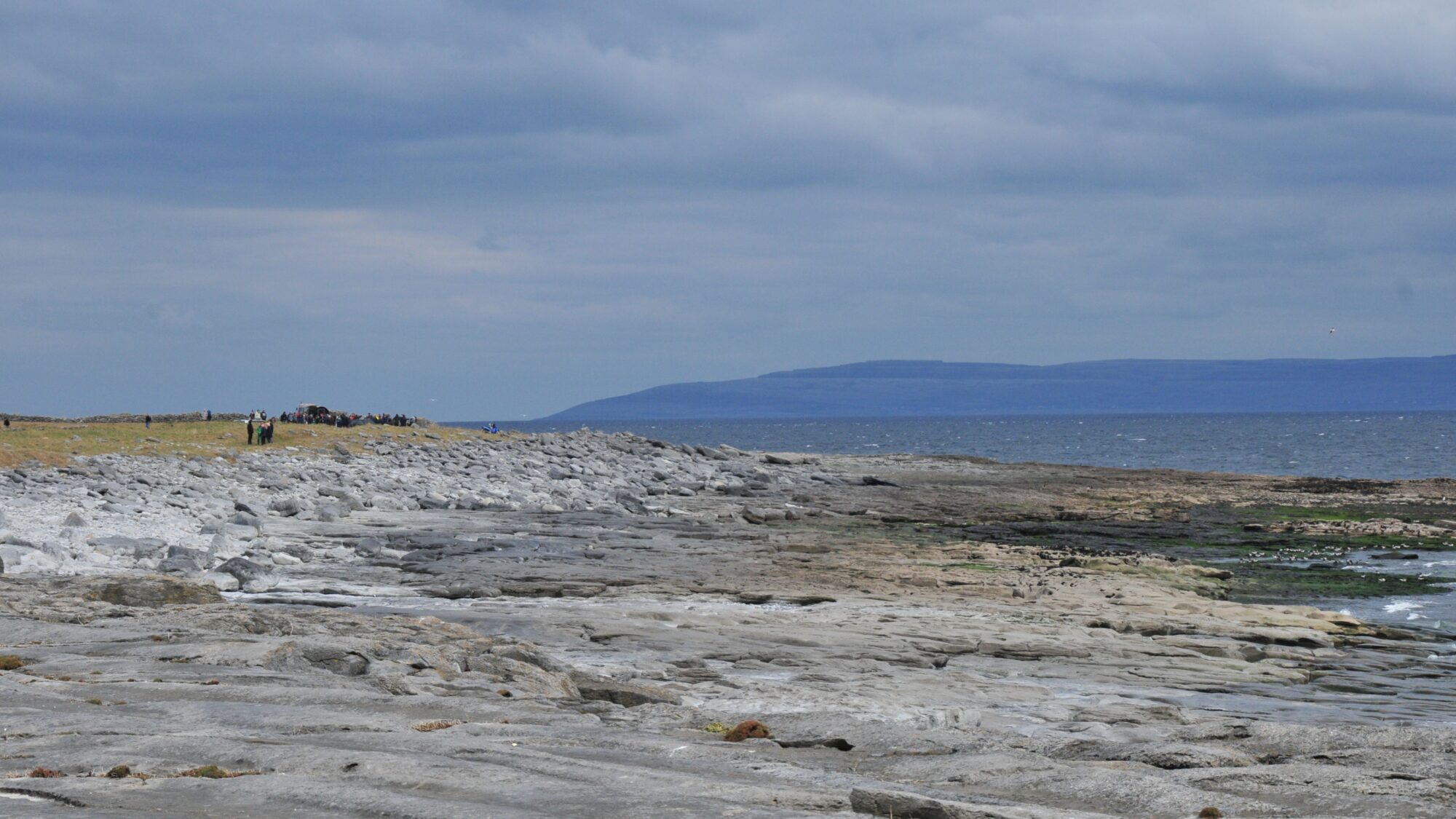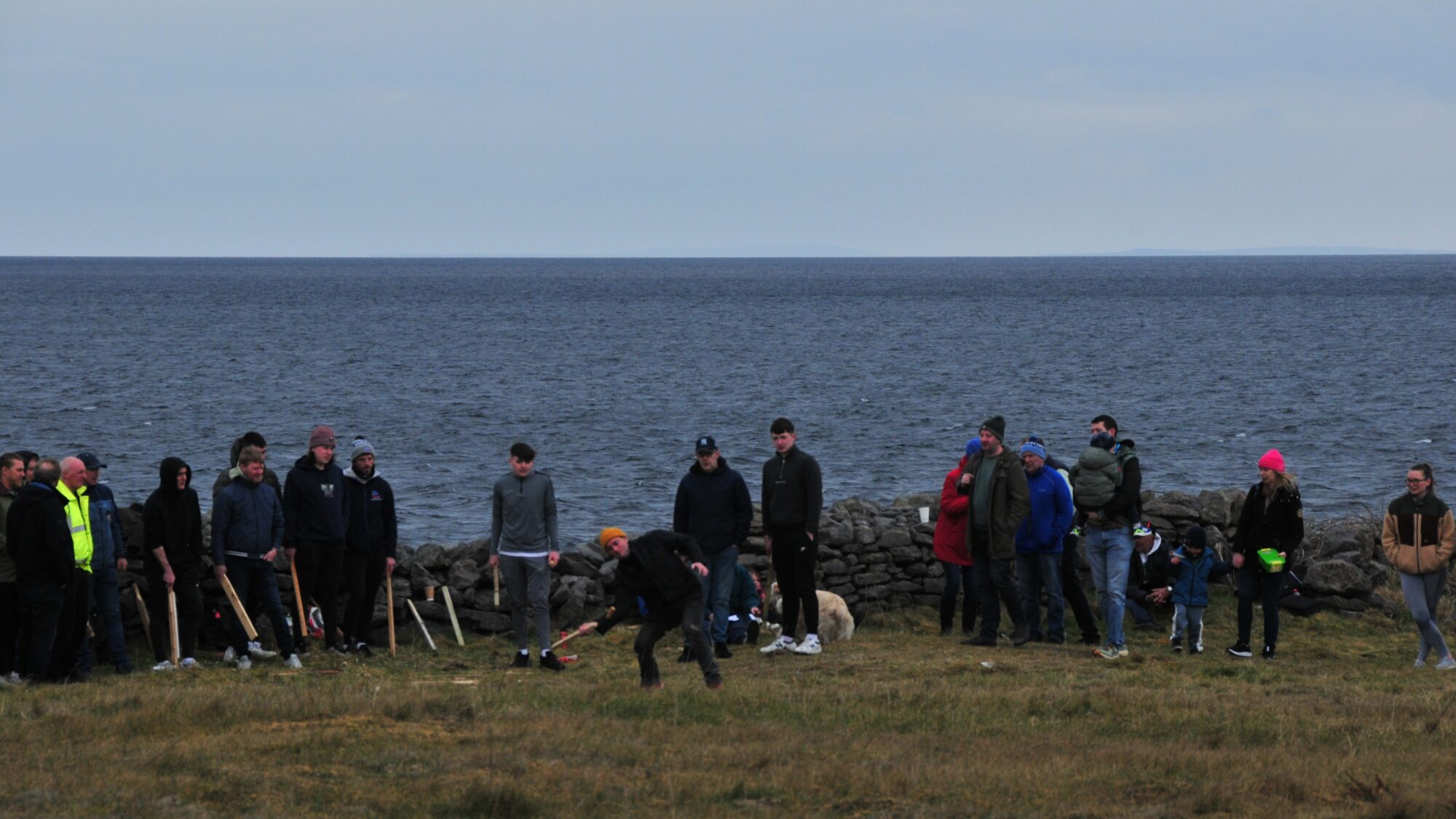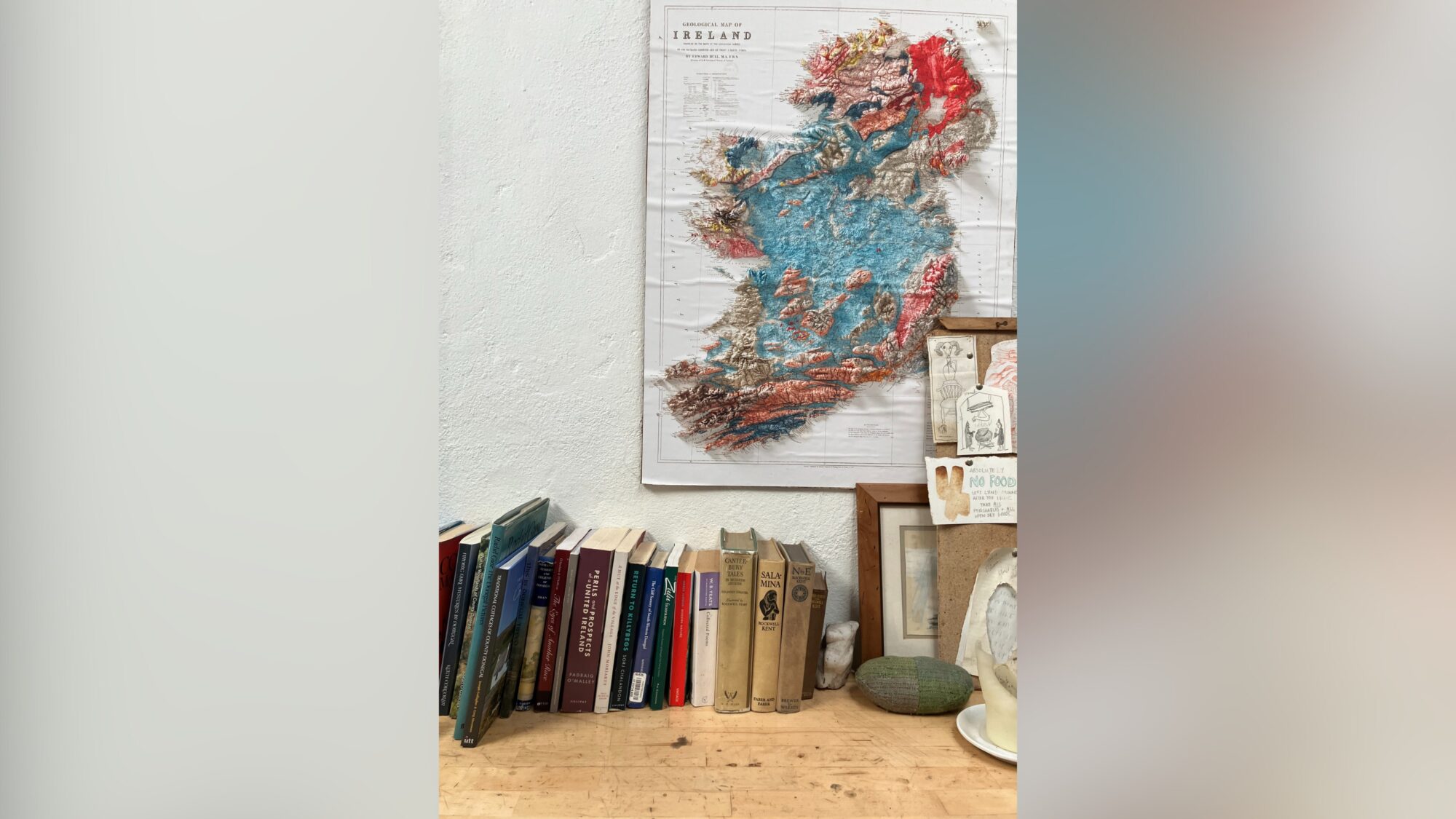The March of the Wooden Soldier
An early embedded memory for me is the black and white haze of the 1934 film Babes in Toyland. It aired often during the holidays on various channels. Not that there were many channels. In those days, in our house, we had 3, and that weird UHF channel thing that had the clicks and lots of channels that didn’t work, and it seemed to be on all of them often. It is also known as March of the Wooden Soldiers as it was rebranded years later, but in short it is a Laurel and Hardy experiment based on an operetta from 1903 of the same name, it takes place in a storybook land full of Mother Goose characters. Vaudeville chaos at its best. There is a genre of film that imprinted my generation with a certain level of magic surrealism and vaudevillian charm and must have been influenced from Babes in Toyland; films like Goonies, The Dark Crystal, Legend, The Labyrinth, and Jim Henson’s The Storyteller.
There is a game that plays a big part in the film, a stick and ball game you see the Stan Laurel character play with, a game he calls PeeWee. This was one of the fever dream impressions tattooed somewhere deep in my hippocampus.
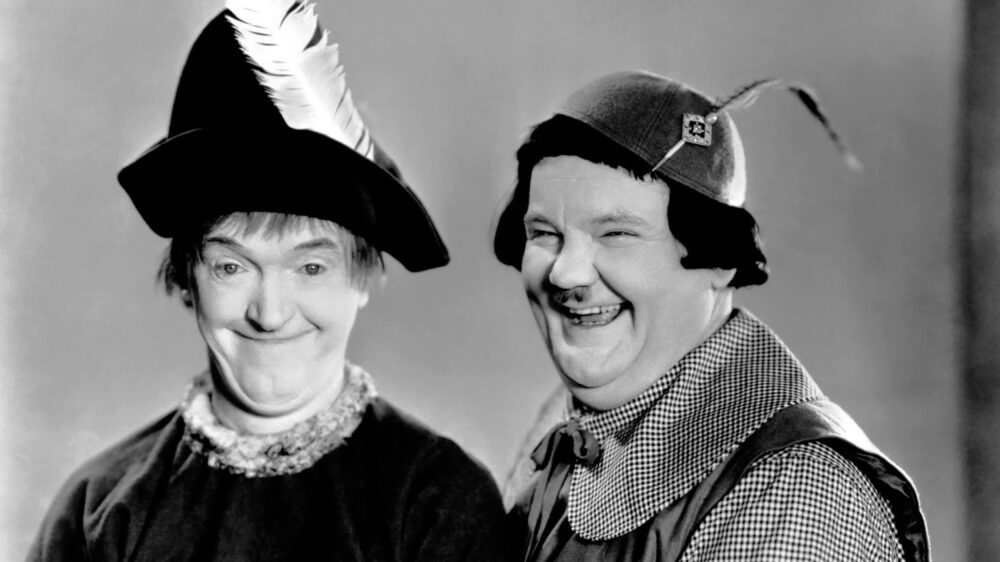
He takes a stick, about 3 feet long, wacks a small 4 inch piece of wood, the PeeWee, which causes it to fly up into the air. He then hits the small 4 inch wood with a forehand tennis swing and the PeeWee goes flying. It seemed simple enough, but I was unfamiliar with the game and the technique.
Years later I would come across this same motion on an island in the North Atlantic, and the floodgates of Stan Laurel and Oliver Hardy would come rushing back.
Connective tissue and serendipity are things I look out for, search for, and try to understand. It’s why I love foodways histories, how Gumbo connects West Africa with France and the Choctaw nation; why I love musicology, you can hear Celtic timbre in Appalachian folk music. Language, Music, food, sport, poetry, these are the places to see the tide marks of culture and migration, when politic erases it and rewrites it and misshapes the memories, these are the places for forensics, places you can find the traces of our connections erased. For the past few years there has been an idea that has occupied a certain place in my brain, and that is the connection of Ireland, Northern Spain, Northern Africa, Asia, and Mongolia. It is a stretch, a particular eurasian stretch, but there are things that are compelling once you start looking. Berber Monkey bones found in County Armagh, the specific style of song and melody from the Irish speaking part of the island matching North African tones, the body and frame of the handmade wooden boats in Galway mirroring the techniques used on the Nile, standing stones near the Orkhon Valley in Mongolia looking like the patterns and styles of west coast Co. Galway; all of these leading me down rabbit holes of graduate student papers in obscure corners of the internet and awkward questions with archeologist friends of mine in Dublin. But the most compelling and interesting line that I have found in these strange connections of seemingly different corners of the globe lie in a 3 foot long stick and a small wooden knob, an ancient game played from end to end of the Eurasian landmass, a game called Cead.
In India it is called Gillidanda. In Iran, a similar game is called Alak dolak. In Azerbaijan, a similar game is called Çilingağac. In Galicia, it is called billarda. In Catalonia and the Valencian Community, a similar game is called bòlit. In Philippines, the game is known as syatong or pati-kubra. In Italy, Lippa. In England, Tip-cat, giddy-gaddy and cat’s pallet. In Poland Klipa. In Ukraine chizhik.
And in Ireland, on one island off the west coast in the mouth of Galway bay, the middle island of the Aran islands, the one called Inis Meain, there is a game played only once a year on St Patrick’s day called Cead.
It is played once in the year and it is against the rules to practice throughout the rest of the year. It is not played on the other Islands, or the mainland, or anywhere else up or down the coast. The team captains are the winners from the previous year and they pick whom they think might be good this year, but since no one practices, it is somewhat equal footing. The population of Inis Meain is 184. Once the game is played, the community walks to the one pub on the island and have an awards ceremony. I don’t know how the game got here, but it is here, and it is played, and the connections with the same game in Iran, India, and the Philippines are as real as can be.
This past St Patricks day I made a pilgrimage to Inis Meain to see this day progress. I have friends who are islanders so watched them and their team, and celebrated their wins. There were two rounds. Four teams, and the first two to reach 60 points would move to the finals. To get a point, one must hit the Cead past a rope that is 30 paces away from the hit. There is an old sailing rope laid out on the field and if you hit the little piece of wood past that point, et voila, a point is scored. The second round is the same and the first team to break the point barrier is crowned the world champion for the year.
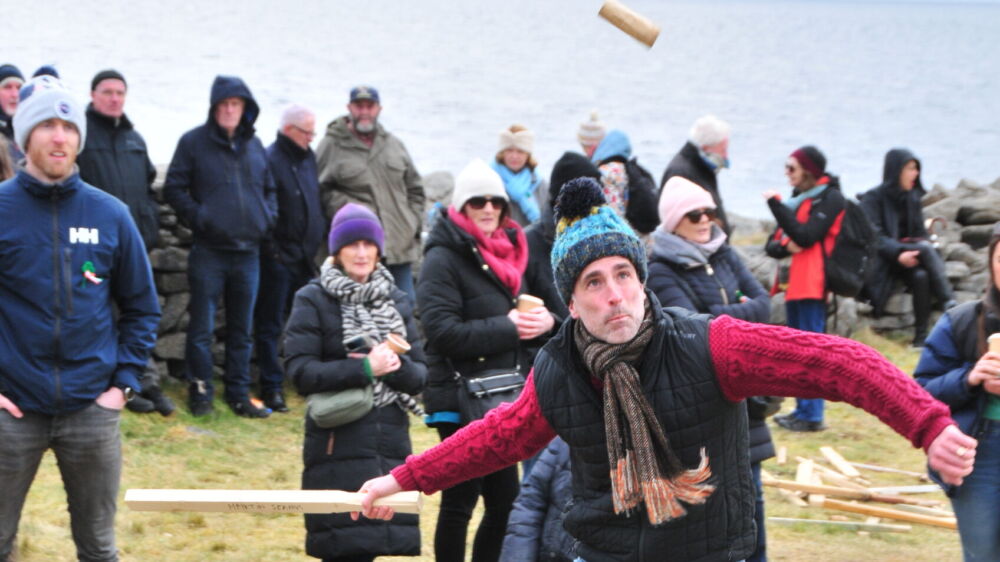
The human connections and collective memory of place are affected by the act of remembering this game, and I can’t think of anything as poetic as Cead being played one day a year to keep the imaginative connections continuing, the sparks in the brain alive. It is a song listened to for the season, it is a meal served one day a year, like thanksgiving, or communion, allowing for a habitual communal memory to exist, even if the links to origins are lost.
I spend a lot of time thinking about the connective tissue between things, not active thoughts, front of mind present thoughts, but back of mind tinglings. I find myself feeling a connection between things without knowing what the connection is (this sounds like paranoia but thank god it has not presented itself like that, yet). Perhaps the best word to use is imagine, I imagine connections between things. I am not talking about small connections either, like “I wonder if Montreal bagels were influenced by immigrant communities”, big far-off connections like “could it be possible there is a connection with the ancient Irish language cadences and Berber musical timbre? Is there some link in between architectural tile themes in Uzbekistan and Hexagonal maps used by Uber and the grid cells of the human hippocampus?” On the verge of madness? Yes, perhaps.
It makes it all the more obvious that Artificial Intelligence would be of interest to me, (minus the paranoia) if only in the way the current AI programs are made to find and explain connections between things, to translate, to interpret a language into another.
In computing history, coding images and information into a Binary system was a simple, elegant solution to processing. The Binary system is the series of 0’s and 1’s we see in the movie the Matrix, the green font with the black background that flows on the screen from time to time. This was a boiling down of the world into a code that contained only two forms, 0 and 1, and if you arrange them in a certain order, information can be communicated, a language is born. The Binary system was an old idea. Leibniz is famed for creating it, but at the time he was reading reams of the I Ching, an ancient text which was based on the philosophy of a binary world view, the Yin and the Yang. And I am not being cute here, Leibniz was reading the I Ching and the I Ching is a reduction of the world into a Binary system. From this simple idea, we can take Glenn Gould playing Bach, reduce it to a series of 0’s and 1’s, send it through the air, and have a computer receive it, process it, translate it, and pump out the sound of Glenn Gould playing Bach. In short, this is how computer processing data works. Bits = BInary digITs.
In the 1960’s, a computer program called ELIZA was created to interact with humans, the first chatbot. This program was simple and could only repeat back questions from simple statements. If you typed in, “I am feeling sad today” it would write back “how long have you felt sad?” The holdback for the program was that it had no memory and if the sentence was too long it would not know how to remember context and details. It would get confused.
The programming advanced and sentences were allowed to become longer, computational memory was created and made efficient in the 1990’s and early 2000’s. How this affected artificial intelligence was through analogy. It became clear that programs that had the ability to translate language effectively (large language models or LLM’s), also had the ability to understand, memorize and contextualize, and generate many other things that were similar to language. In order to have the computational ability to remember context in language and how it changes the computer program must have the ability to create connections between things (if only through repetition), and it also needs attention.
In 2017 an article called “Attention is all you need” came out from computer scientist Ashish Vaswani and a handful of authors, many from Google, explaining a new way to process information that helped bridge a gap that was missing in many AI models up until that point. The article proposed the idea of a transformer process which allowed for “self attention”. (The irony that the golden key that allows for AI to thrive is called “Attention is all you need,” in a world where algorithms and computers are used mostly as attention grabbing advertising machines is not lost on me.)
In very short terms, the mechanism this article proposed allowed for simultaneous connections and memory to interact within a system. This allows the model to capture different types of relationships between input elements. Connection, synapse, and electric. I probably have most of that wrong, I am not a programmer. What I do know is the article let loose the hounds of programming that created fast growth in function of artificial intelligence programs, and from 2017 onward things moved fast.
Any large set of data can be looked at as something that needs translating. When looking at brainwaves in an MRI machine, the bloodflow and electric currents of the brain as it thinks, is, in a way, a language. You remember your childhood bedroom and blood flows to a certain area of the brain along
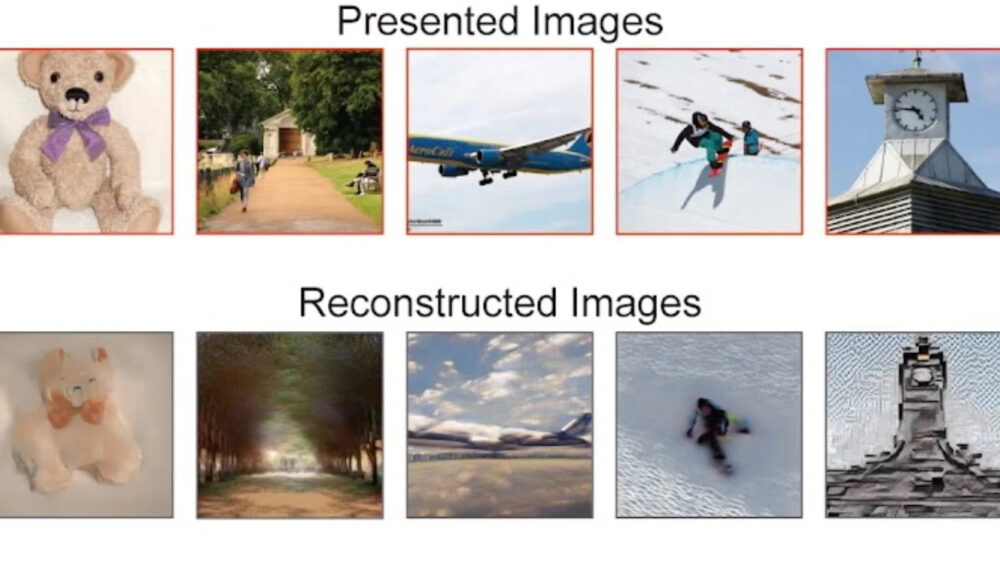
with electrical charges through certain cells. Large language models can translate the activity in your brain to translate what you are thinking of. Below are a series of photos generated from AI mind reading technology:
It isn’t perfect, but it isn’t far off.
These models that were initially used for chatbots and translation between Spanish and English, were seen to be useful as mock intelligence on many other levels. The advancement of Chat GPT and other AI models became magnified through thinking of all things in experience as a language that can be translated, an omni forced connector of things. It is immense, it is a very great step but I fear it is misunderstood in which direction it is stepping. I fear the connections that are being made inside of this machine are not the same as the connections that happen inside of me when I see Cead being played on Inis Meain, that happen when we travel, that happen in our poetry, and our music. There is something essential and ethereal not included in the machine, there is something missing.
Carl Sagan said we should have sent poets to outer space, and the same sentiment is what I am dancing around. Poetry is a similar sort of activity as what these intelligent machines are trying to achieve; the connection of things and context of the human experience written out in language, but poetry allows the brain to sense the connection, it allows for imagination and a shared lived experience. This is where I feel AI falls short (among other things, i.e. economic drivers and manipulations for sales).
When we travel, what we seek is the implied difference and connection from around the globe. When we hear music, we feel the connection of complex emotions, the way you can feel both the tragedy and the joy in the same sonata, the contrasting contradicting dancing way it is to be an emotive human.
Poetry, Travel, and Music do a similar thing as AI programs, except, Poetry, Travel, and Music need discovery, imagination, and the hint of human connection, the heartbeat of translation instead of explicit translation. Mary Oliver doesn’t tell me what to feel when I read her, she writes the feelings hidden in the words and I somehow receive them. Poetry, Travel, and Music have humanness and emotion mixed with attention and memory.
It is why when we hear a song we are transformed to a place in time, we can hear and feel, it is nostalgia. Poetry plays with emotive memory, it pulls on our collective human bond and experience, and hints at images and ideas that play with our memories. Travel creates these memories.
Artificial Intelligence programs play at being human, but are still artificial, they are missing what we feel when we move around the globe. Even the implied, misunderstood connections like Cead on the isle of Inis Meain, still played, only once a year, on the day of the feast of Saint Patrick.
